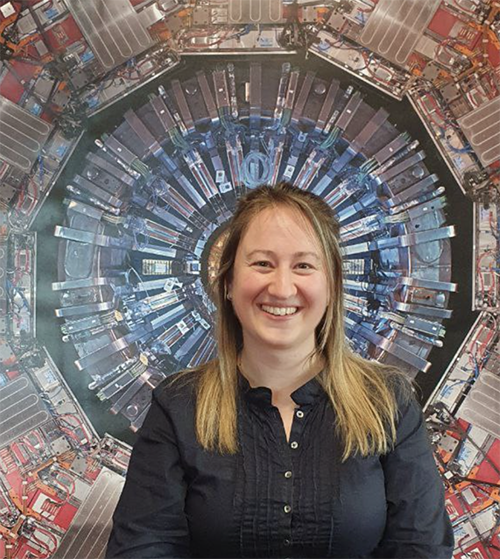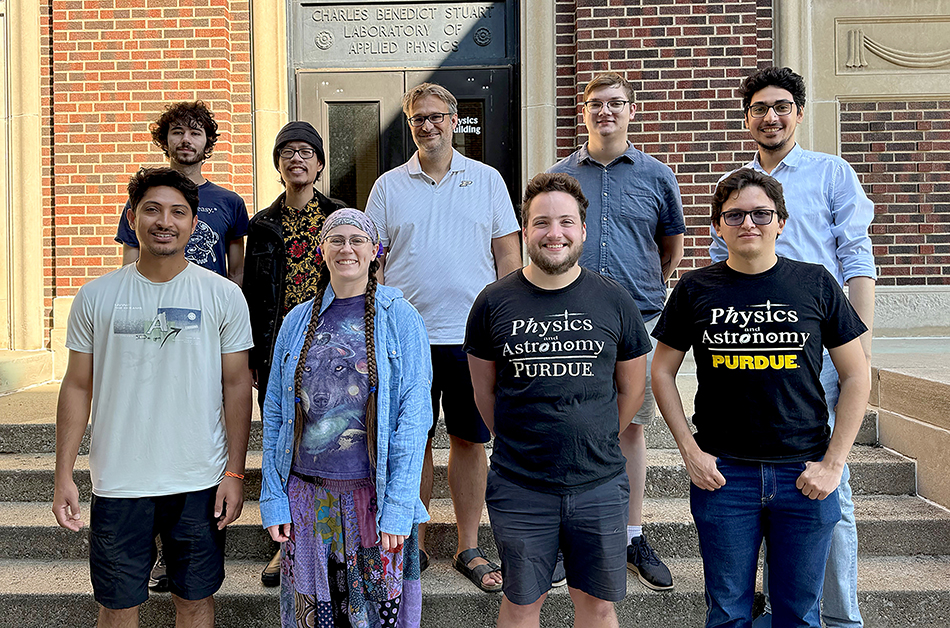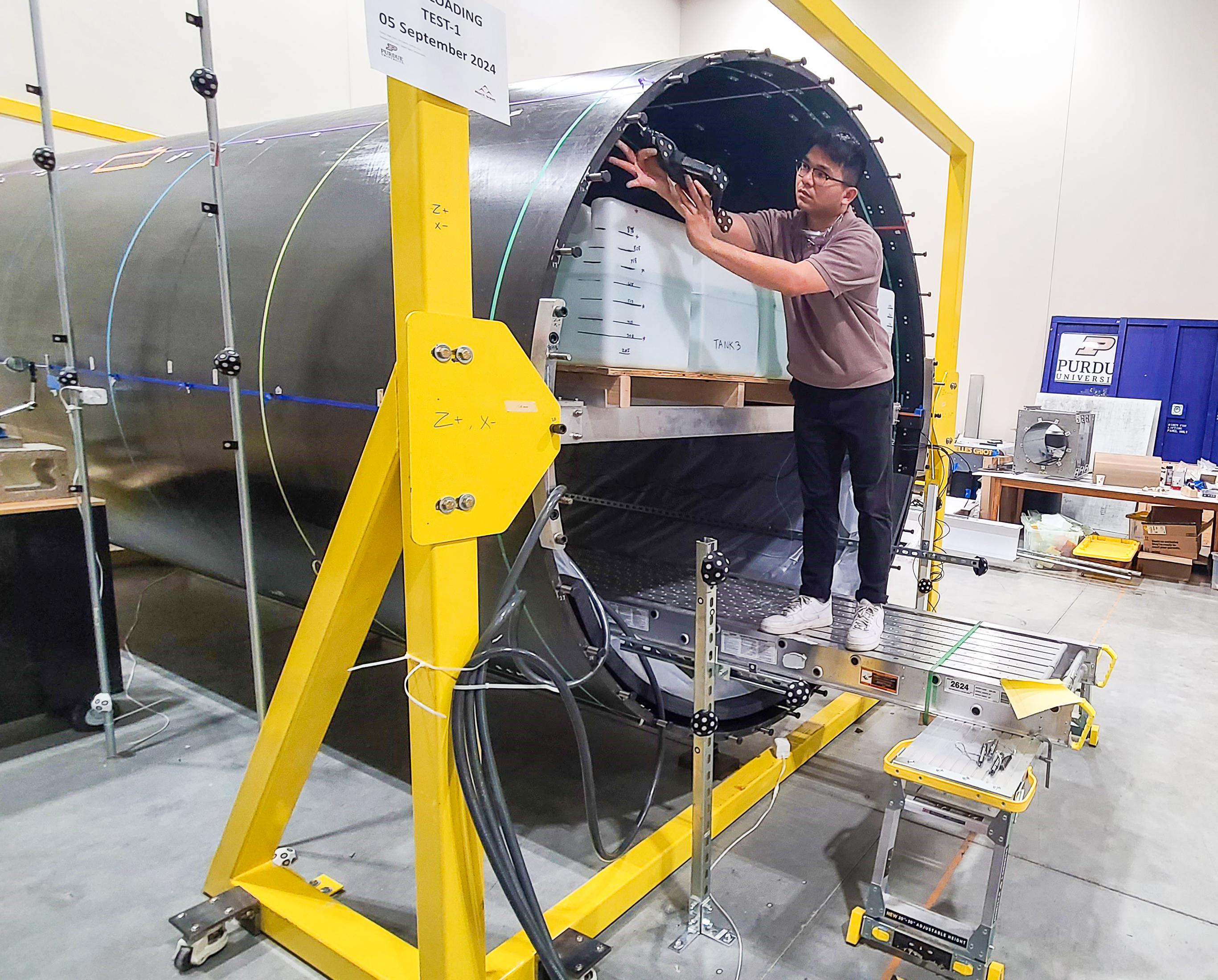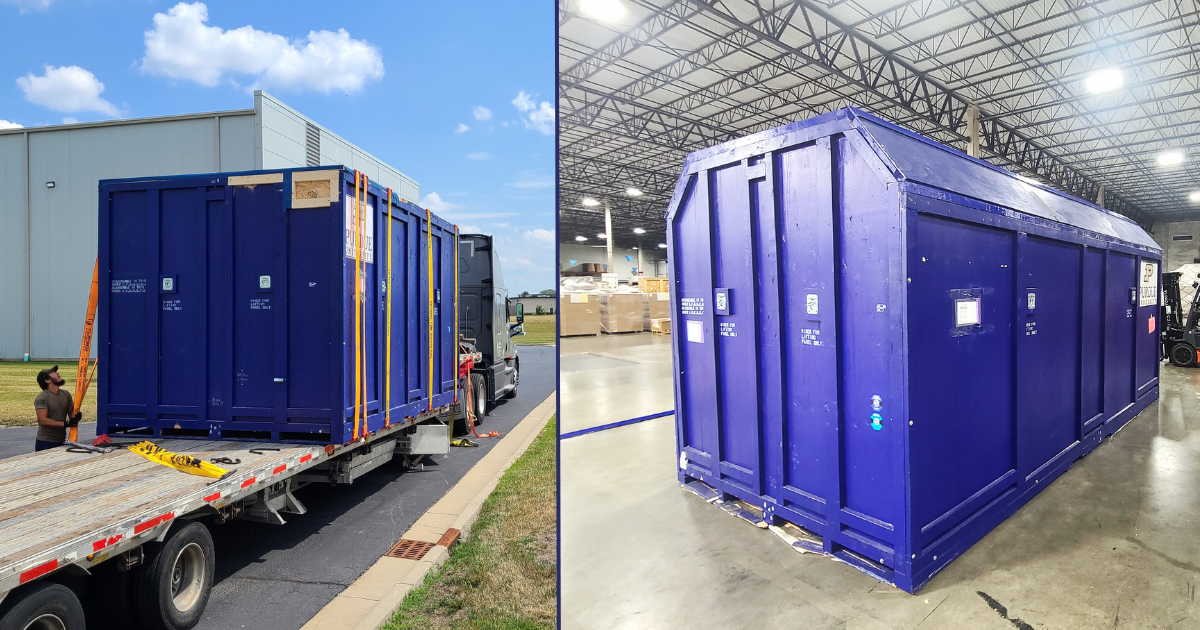
From Particle Physics to Industry Success:
Professor Andreas Jung’s Impact at CERN and Beyond
Professor Andreas Jung is making waves in both cutting-edge research and industry innovation. As a key contributor to CERN’s Compact Muon Solenoid (CMS) detector, he and his team have played a crucial role in advancing our understanding of particle physics. Beyond academia, his entrepreneurial pursuits have also gained significant traction, with his Purdue University-connected software company Quantum Research Sciences recently achieving notable success in the industry. In this feature, we explore three recent news articles that highlight his groundbreaking work at CERN, contributions to physics research, and impressive strides in the business world.
Quantum Research Sciences wins DLA contract to develop Product Obsolescence Prediction tool
AI, quantum computing will power the innovation
Written by Steve Martin, originally published in Purdue University News

Purdue University-connected software company Quantum Research Sciences (QRS) has received a Phase I Small Business Innovation Research contract from the Defense Logistics Agency (DLA), which contracts, purchases, distributes, stores and disposes of items for the Department of Defense.
QRS will leverage artificial intelligence, machine learning and quantum computing technologies to create the Product Obsolescence Prediction (POP) tool. This tool will enhance the DLA’s supply chain management capabilities and reduce the challenges associated with obsolescence.
Headquartered in Lafayette, QRS is a Purdue Innovates client company and an affiliate company of the Purdue Quantum Science and Engineering Institute.
Ethan Krimins, chief executive officer of QRS, said the ability of the DOD to effectively defend the nation hinges on the efficient functioning of its thousands of systems, all of which are reliant on parts, materials and code.
“However, the life cycle of these components is not infinite, and any unplanned obsolescence threatens operational efficiency and force readiness,” he said. “Predicting and managing obsolescence is a complicated task. It necessitates a delicate balance between fulfilling combat requirements, budgeting, ensuring supplier stability, mitigating material failures, accommodating design alterations and monitoring system life cycles, among many other variables.”
Krimins said effective obsolescence management is fundamental to DLA’s mission and a cornerstone of a resilient and effective logistical operation.
“Managing obsolescence will streamline the procurement and upkeep of components within the supply chain, reducing operational disruptions and bolstering readiness,” he said. “This capability not only ensures the availability of needed parts but also contributes to a robust supply chain that can adeptly respond to evolving demands.”
Andreas Jung is chief operating officer at QRS and an associate professor of physics and astronomy in Purdue’s College of Science. He said leveraging the POP tool’s cutting-edge computing technologies will improve the DLA’s ability to manage part obsolescence.
“Combined, these technologies will provide predictive capabilities, analyze the complex web of interdependencies and automate obsolescence management processes that are, today, largely manual,” he said. “By innovating with AI/ML/QC-powered obsolescence process, DLA can also work toward its overarching objectives of supporting nuclear enterprise, force readiness and efficacy, and supply chain innovation and assurance.”
CERN’s CMS detector observes quantum entanglement at highest energy ever
Purdue researchers on the CMS team led early indicators that proves high-energy colliders are useful tools for measuring and observing entanglement

Above: Prof. Andreas Jung (middle), Lingqiang He (left) and Andrew J. Wildridge stand in front of a true-to-size mural of the CMS detector that can be seen on the third floor of the Purdue Physics Building. Below: Giulia Negro, postdoc working with Jung’s team, stands in front of the CMS detector where she is currently working remotely at CERN. Photo provided by Negro.

The romantic notion of entangled particles presumes that once two particles become entangled, they are forever bonded no matter how far apart from one another they are. This relationship has puzzled physicists ever since Erwin Schrödinger coined the term “entanglement” in 1935. Though scientists have observed this phenomenon in many ways, there has been no research at high energies such as provided by large-scale labs like the Large Hadron Collider.
In an article published in Nature, the ATLAS collaboration reports how it succeeded in observing quantum entanglement at the LHC for the first time, between fundamental particles called top quarks at the highest energies yet. First reported by ATLAS in September 2023 and confirmed in March 2024 by the CMS collaboration, this result has opened up a new perspective on the complex world of quantum physics. This discovery includes four researchers from Purdue University’s College of Science.
In a CERN press release, ATLAS and CMS teams observed quantum entanglement between a top quark and its antimatter counterpart. The observations follow a recent proposal of using pairs of top quarks produced at the LHC as a new system to study entanglement.
Modern day scientists see great potential in the behavior of entangled particles because of their vast potential in quantum mechanics. The CMS is a general-purpose detector that sits at one of the four collision points of the Large Hadron Collider, the largest and most powerful particle accelerator ever built. Researchers have recently begun using the CMS detector to study quantum entanglement. Andreas Jung, associate professor of Physics and Astronomy at the Purdue University College of Science, led a team of researchers that used the CMS data to form the early discovery of the observed quantum entanglement.
This result is also featured in a Nature News article highlighting the details of the data analysis done by the Purdue group.
Jung is the Principal Investigator and leader of the analysis team dedicated to the measurement of top quark quantum entanglement using CMS data. He served as the CMS TOP physics analysis group convener in 2020-2022 and his group is also a major contributor to the CMS detector upgrade of the silicon tracking devices.
“Entanglement is a new probe to study quantum mechanics at fundamental level and to understand bare top quark properties in order to reveal beyond the Standard Model contributions,” he says.
"While particle physics is deeply rooted in quantum mechanics, the observation of quantum entanglement in a new particle system and at much higher energy than previously possible is remarkable,” says ATLAS spokesperson Andreas Hoecker. “It paves the way for new investigations into this fascinating phenomenon, opening up a rich menu of exploration as our data samples continue to grow."

Jung’s team included Giulia Negro, a postdoc, and two PhD candidates: Andrew J Wildridge and Lingqiang He, all from Purdue University. The CMS internal review was led by the Analysis Review Committee chair Javier F. Menendez (Oviedo U.), and CMS TOP physics analysis group conveners Alexander Grohsjean (DESY), Jan Kieseler (KIT). "After a thorough internal review, we are very happy to see this measurement being released to the public", comment the CMS top group conveners Alexander Grohsjean (DESY) and Jan Kieseler (KIT).
Negro is currently the detector performance group coordinator, as well as the Deputy Run Coordinator of the CMS detector and hence, plays a critical role in overseeing the large complex task of CMS detector operation. As such, she is part of the CMS Management Board. In 2021, she received a CMS award in recognition of “crucial contributions to the refurbishment and the operation of the CMS Pixel Detector.” She is also a recipient of the Ross-Lynn Fellowship at Purdue University.
"It's fascinating how the largest accelerator on earth can enable us not only to probe the Standard Model of particle physics but also to explore fundamental quantum mechanics effects," says Negro.
“This measurement showing that the top quarks are indeed entangled is exciting to me because it is paving the way for the fascinating ideas in quantum information theory to be applied and studied on fundamental particles beyond the electron and photon,” says Wildridge, who is involved in the analysis of the data.
Jung’s team authored early results from this study at the beginning of this year. At that time, they were hoping the CMS results would confirm the earlier ATLAS findings. “The new CMS result confirms the existence of entanglement between the top quark and its antiparticle beyond reasonable doubt,” says Jung. “The two states are found entangled with a significance exceeding the famous five standard deviations discovery threshold and in agreement with the Standard Model prediction.”
This giant leap in quantum particle physics aligns with a mission from Purdue University. Quantum science and engineering is one of four dimensions within Purdue Computes, a major initiative that enables the university to advance to the forefront with unparalleled excellence at scale. The team plans to move forward with more research with the CMS detector and this discovery throws the doors open for new discoveries.
“The results also open new paths in the particle-physics arena,” says CMS spokesperson Patricia McBride in CERN’s press release. “With measurements of entanglement and other quantum concepts at an energy range beyond what was previously accessible, we can test the Standard Model of particle physics in new ways and look for any signs of new physics that may lie beyond it.”
According to Jung, “Quantum information at particle colliders is a new exciting field of research, which is now producing six times the number of papers on preprint servers (arXiv) compared to ten years ago. It allows us to challenge our understanding of quantum field theories with many prospects to discover new physics and phenomena.”
This research is funded by the U.S. Department of Energy program under Award Number(s) DE-SC0007884 titled "An Experimental and Theoretical High Energy Physics Program" and under Award Number(s) DE-SC00023700 titled "AI for a more precise future of the top quark."
The BTST, a key piece of the Upgraded CMS Detector, arrives at CERN
Written by Alessandro Lapertosa & Adi Bornheim, originally published on CERN
In a massive step toward CMS’ High-Luminosity era detector, a key component of the build has arrived at the CERN laboratories.
CMS has received a very big box! The BTL-Tracker Support Tube (BTST) is a carbon fibre cylindrical structure designed to sustain the future CMS silicon Tracker and the Barrel Timing Layer (BTL), key components of the future CMS detector.
In preparation for CERN’s High-Luminosity LHC, all the particle detectors on the LHC are undergoing vast changes. This is to make the most of the increased luminosity and to continue recording as many interesting collision events as possible, even in conditions much harsher than the current ones.
The BTST is 5.3 metres long, almost 2.5 in diameter, and perfectly cylindrical, with only one and a half millimetres of distortion allowed. It is an essential component, built to be able to support a combined mass of about 5 tons between the Tracker and the BTL – all while weighing only about 600 kg itself!
In order to create something both so strong and so lightweight, the design is made of 2 carbon fibre sheets enveloping a light, honeycomb structure, for a combined thickness of just 3 cm.
This specialised design was a joint project of the Tracker and BTL engineers and physicists, under the leadership of the Purdue CMS group and the Composites Manufacturing & Simulation Center (CMSC) at Purdue University. The tube itself was manufactured in industry by a specialized company in California, Rock West Composites Inc. in 2023.
However, after production in San Diego, it had to make its way in perfect condition all the way to Switzerland. It took a long road trip to Purdue for quality checks and extensive testing to make sure the minute tolerance was not exceeded, which took several months of precise measurements. Then it traveled onwards to Chicago O’Hare airport.

During the transport between Purdue and the airport, the box was damaged in a road accident and had to be returned to Purdue University. After 3 months of extensive inspections at Purdue (visual, laser, ultrasonic tests) it was confirmed that the BTST was in perfect condition. A final test, loading a weight of 2800 kg, validated the strength of the BTST structure. After a formal review of the results, the BTST was declared ready for onward transport to CERN.
The large box holding the BTST, although huge, does fit into an airplane - just. In order for it to fit, the edges of the container box had to be cut off! However, cargo planes able to transport such huge boxes cannot just land anywhere, and the closest possible airport was in Luxemburg, where it was loaded onto a truck and driven to Geneva. It made it through import formalities and acceptance checks before finally arriving at CERN.

Now the tube is being checked before the next steps: its outer surface will be covered with heating foils to thermally insulate the Tracker and BTL. This is because they need to be kept at -30°C, achieved through CO2 based cooling, whereas the tube will be surrounded by other components at around 10°C. That is a difference of approximated 40°C across those tiny 3 cm!
Then, the BTL will be installed on the inner surface of the tube: 72 trays full of BTL modules will be inserted. The BTL modules were designed to be very thin, using the best precision-timing technology available: a crystal scintillator coupled to silicon photomultipliers. This will allow to achieve a time resolution of about 35 ps.
The full Tracker will be installed inside the Tube: the Outer Tracker (6 layers and 10 wheels, 5 for each side, of double-sensor modules) and the Inner Tracker (4 layers and 24 disks, 12 for each side), for a total weight of about 2500 kg. The Inner Tracker will need to be installed in another tube, being built at Purdue, Inner Tracker Support Tube (ITST), again in carbon fibre composite material, and installed once the Outer Tracker is completed.
All the teams are very excited about the arrival of the BTST and are eager to dive into the next steps towards that High Luminosity era: the Tracker and BTL assembly can officially start!
Watch a timelapse of the unboxing of the tube at CERN